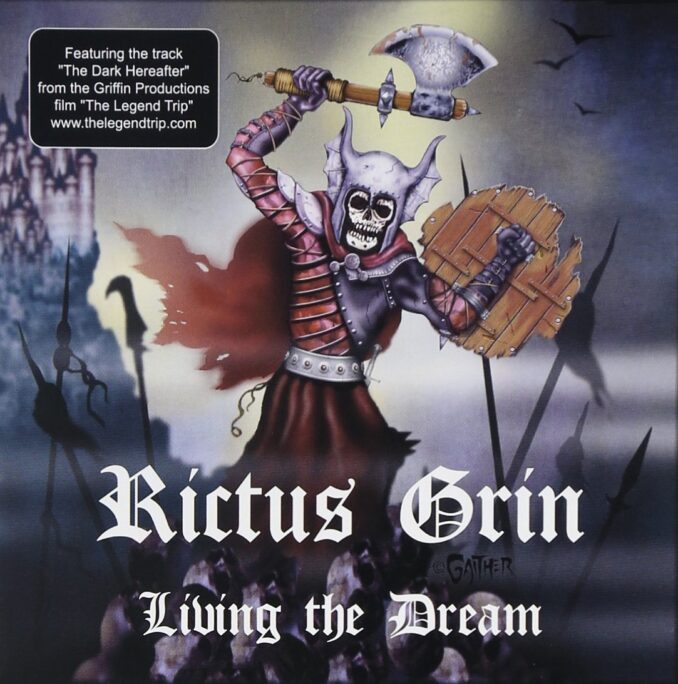
This is the fifth album of the Thrash Metal trio, plus a session member, that hails from the USA, under the name Rictus Grin. Surprisingly, this band hasn’t signed yet a contract with a proper record label, even though they had some very good reviews, especially for the 2003 release Taste the Steel, and performed live, supporting some major Metal bands (e.g., Motorhead, Exodus, Iced Earth). Their sound is something like Thrash meets Death Metal with a dash of Doom.
The impressive guitar work is definitely one of the highlights of the album, featuring a plethora of extremely heavy riffs and a solid rhythm section. The song arrangements have their roots back in the mid-eighties, with music influences like Slayer and Overkill. Unfortunately, the aforementioned influences have less to do with the vocals, which have some Hardcore moments that just don’t fit well with the album’s sound. Maybe it’s an unfortunate attempt to modernize their sound, in search of a bigger audience that will give them the opportunity of a record deal. Aside from that, there are some good Death Metal growls and aggressive vocals in Tom Araya’s (Slayer) singing style. Notable along with the fast-riffing are the drums, due to Jeff Lamers steady and compact performance. The production has succeeded in giving the proper strength and volume in the sound, receiving additional credit since the bass guitar has its “voice” comprised of some skillful fills.
The album opener, “Lifeless,” has a distinct Death Metal direction with some very good Slayer–ish riffs. Next, there is a ton of a heavy track, entitled “Stalker,” comprising battering drums and a mid-tempo guitar rhythm section. A cutting edged riff is like a small intro in the best track of the album, under the name “Death Dance.” The riff gives its place to the heavy rhythm section, which slows down, in tempo terms, just before the bass guitar takes the lead to a Thrash-breaking outro. “The Dark Hereafter” follows the above music pattern with tempo changes and an appropriate rhythm section for headbanging in the front rows. During the chorus, there are some hardcore vocals that just don’t fit into the Thrash sound of the song. After “Keystone Buick,” which is about a car that runs on beer, there clearly is a hardcore song in “Rictus,” that gets out of the whole Thrash/Death Metal concept. The band’s potential in riff-making can be easily recognized in “Morgue,” an up-tempo song with clear Thrash direction and fast drumming. “Poe” is another song with Hardcore vocals, but this time they fit nicely in the music, which has something from the Gothenburg sound (In Flames, Soilwork). Last but not least is “Alucard,” a Thrash song that slows down for a while, reveling the Doom side of Rictus Grin.
These guys need to find a better place for the Hardcore vocals in order to fit in their own music style that will provide the recognition they deserve. They also need a record label to help them out with a better production and possibly better artwork. Apart from the above, Living the Dream is a very good, almost-Thrash record that’s worth buying.

Be the first to comment